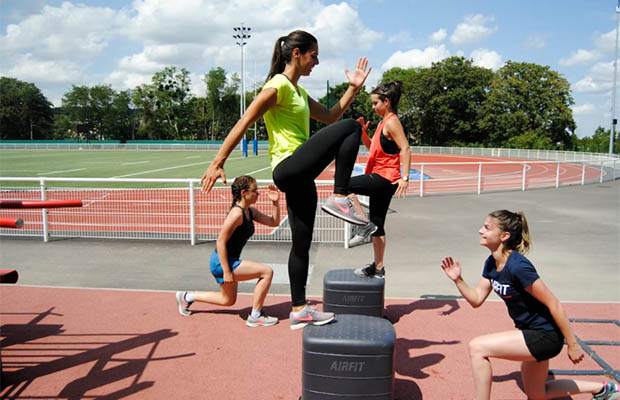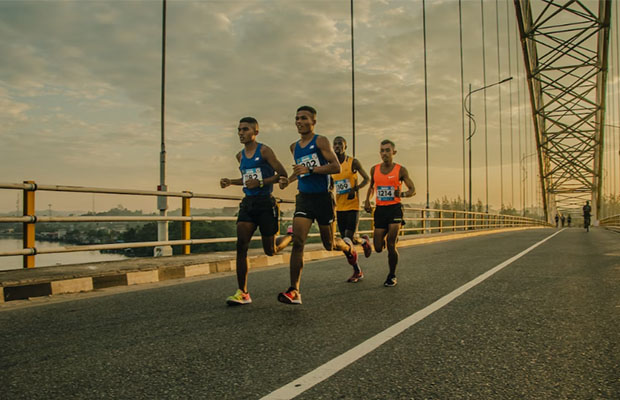Are Athletes With Flat Feet A Big Problem?

Your ability to generate power in any sport or physically demanding game depends heavily on your feet, as do your agility, acceleration, and balance.
Are athletes with flat feet a big problem? No, athletes shouldn’t let flat feet keep them grounded.
It’s normal to worry about the immediate and long-term effects of a structural abnormality like flat feet on your health, comfort, and performance. But it shouldn’t prevent you from becoming an athlete. Continue reading, you will find your answer.
Table of Contents
What Are Flat Feet?
We all have flat feet by birth. As we age, the majority of us get arches. Some people do not, either due to genetics (like me) or an injury to the tendons and muscles in their feet, whether from sports, poor balance, or poor footwear choices. As people age, some develop fallen arches.
Your body’s shock absorber is the arch of your foot. It has the capacity to disperse 15% of the force of your body weight as you move. The pain is genuine when the arch collapses. You can even feel it in your back and hips. Additionally, it seriously jeopardizes your natural equilibrium.
Walking is difficult because of this. Running is much worse because it can lead to heel spurs or plantar fasciitis, which are painful inflammations of the fascia that runs along the bottom of the foot and connects the heel bone to the ball of the foot.
Why Is Foot Important For Playing Sport?
Whether it’s basketball, tennis, football, or track and field, mastering footwork and balance is essential. Your balance becomes more erratic when you have flat feet, which increases your risk of becoming exhausted and lacking in energy. Additionally, your upper body works less effectively and you become a less successful athlete when your lower body is not properly supporting your weight.
Foot issues like plantar fasciitis, muscle spasms, and calf fatigue can manifest when flat feet are overworked. In my case, plantar fasciitis caused excruciating pain that extended from my sole to my heel and seriously hindered my ability to walk normally, let alone train and perform on the court.

I had no idea that exerting myself physically while playing sports could result in these issues due to my inherited flat feet. I had no idea that it affected my balance every time I played a game. And I’d never been told that the problem could be solved relatively easily by simply fitting my trainers with arch supports that would stabilize my foot mechanics, speed up the healing of my plantar fasciitis, and enhance my overall balance while competing in sports.
Fortunately, a positive outcome came about in my case. I had custom-made orthotics made for my shoes by my podiatrist, and I was soon able to play again without experiencing any pain. But it’s safe to say that I won’t ever ignore the health of my flat feet again.
Related Reading: How To Run With Flat Feet?
Potential Dangers For A Flat-footed Athlete
Give us a call for an evaluation if you have flat feet and engage in sports, or if you’ve started to feel like chronic pain, instability, or other foot or ankle issues are holding you back. The good news is that, quite frequently, your condition can be significantly improved using only non-surgical methods.
Your choice of shoes is crucial. Those with more stability, motion control, and arch support are desirable. You can achieve greater stability and counteract your natural overpronation with the right pair of shoes.
Additionally, arch supports or, if necessary, custom orthotic inserts made to fit each athlete’s unique foot shape are often beneficial for those with flat feet. At Austin Foot and Ankle Specialists, we employ FitStation digital scanning and pressure plate technology to precisely record the form, motion, and functionality of your feet. We then send this data to a lab so that it can 3D-print your orthotics according to specifications.
In comparison to the conventional plaster mold or foam box approaches, this cutting-edge method represents a significant advance in orthotics technology and can produce orthotics that are significantly more personalized and efficient. Plus, the resulting orthotics are especially great for athletes, since they’re extremely light and comfortable, and even come in several sport-specific varieties (such as running and soccer).
In addition to shoes and orthotics, if you already have many painful side effects from having flat feet (like plantar fasciitis), we can also offer a number of additional conservative treatment options, like laser therapy or perinatal injections.
The Bottom Line
Many people experience flatfoot, a condition. Luckily, most flat feet don’t require any kind of treatment.
In fact, the prevalence of flat feet among professional athletes is similar to that of the general population (i.e., 20%). You’re okay as long as your flat foot is flexible or supple. So don’t let flat feet become an obstacle to your pursuit of dreams. Just do it!
Tags: Athletes With Flat Feet